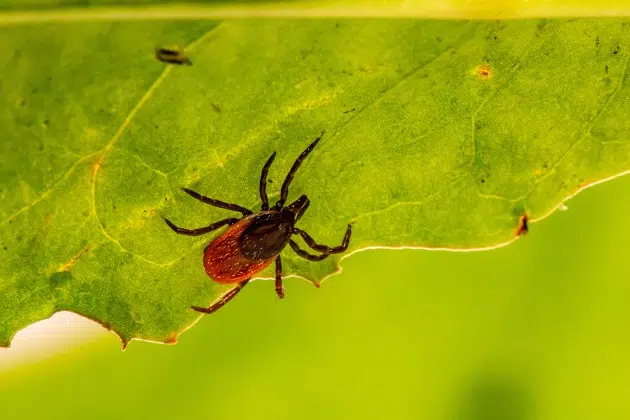(KNSI) – CentraCare is already seeing patients come in for tick-borne illnesses this year.
The pests are often found in woods and high grass, which makes hikers and bicyclists most vulnerable. Dr. Thomas Math says using layers of clothing and bug spray are the best deterrents.
“Anything that doesn’t allow a tick access to your skin, that’s what you would like to avoid. And if you have exposed skin, try to use a repellent, right? And again, deet would be what comes to mind.”
Long pants should be worn with a rubber band towards the bottom. Ticks will fall off the grass and find their way to your ankles before climbing up your legs. Math also recommends boots, but he realizes they are not the most comfortable in the heat of summer.
Deer ticks are the most dangerous from an illness standpoint. They are smaller than a dog tick, jet black, and have prominent legs that jut out from the rest of the body. They carry Lyme disease, anaplasmosis, and parasites called Babesia.
There’s some good news when it comes to ticks, though. There is a grace period of up to 48 hours during which a tick has yet to really latch in. “The tick has to regurgitate some enzymes that make your blood flow; it takes a bit of time, right? Also, ticks…they’re trying to do what they call initial bites to see what is the right spot.”
He recommends doing a careful inspection to uncover any ticks that could be on your body. You may need a second person to inspect hard-to-see spots like behind the ears.
Lyme disease will sometimes present with a bullseye pattern rash. If you need a blood test instead to confirm, it takes four to six weeks for results to come back.
___
Copyright 2024 Leighton Media. All rights reserved. This material may not be broadcast, published, redistributed, or rewritten, in any way without consent.






